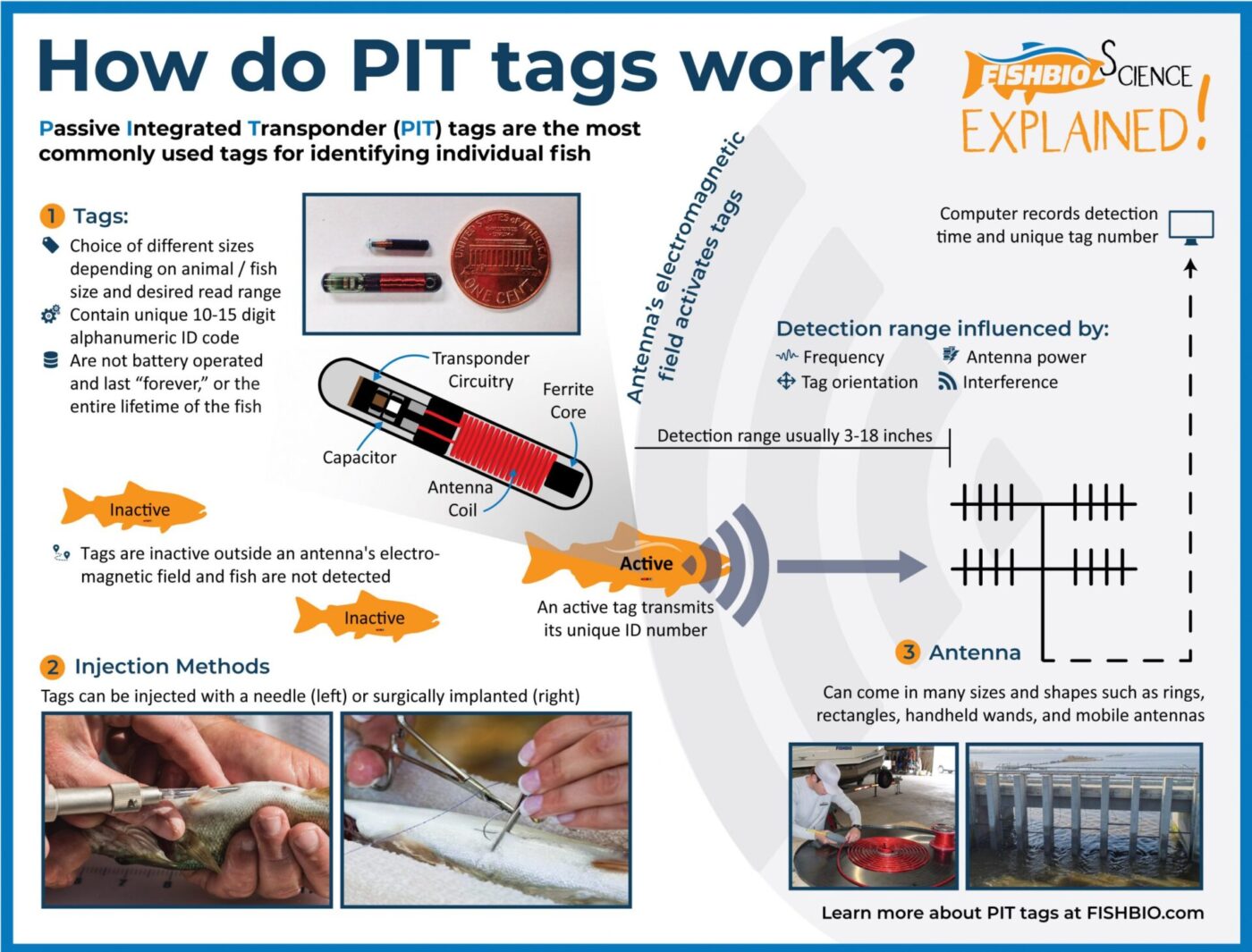Passive Integrated Transponder tags – commonly referred to as PIT tags – contain the same technology as the “microchips” used in pet dogs and cats, and are widely used in fisheries studies to track fish movement, survival, and growth over time. Each lightweight tag is a pill-shaped cylinder of glass housing a small radio transponder that contains a specific code. This code assigns a tagged fish (or other animal) a unique 10 or 15 digit alphanumeric identification number, making it possible to identify and track individuals over time.
Unlike other tags that actively transmit a signal (such as satellite or acoustic tags) and thus require batteries, PIT tags respond to an electromagnetic signal emitted from a scanner or reader. When a PIT tag is within range of a reader, its transponder reacts to this charge and transmits the tag’s unique identification code. The code is then recorded by a device connected to the reader, documenting a specific detection of an individual fish.
Although handheld scanners can be used to check for tags in fish that have been captured, readers are most often installed into antenna arrays to detect any tagged individuals that swim by. When multiple antennas are used, it’s even possible to determine the direction of fish movement. Mobile antennas can also be used to detect fish in a study area. The lack of a battery means that a PIT tagged fish can be detected over the course of its entire lifetime. FISHBIO has surgically implanted thousands of PIT tags into fishes for various studies, including tracking the movements and life-history patterns of threatened California steelhead.

